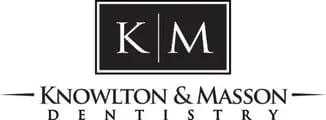Early orthodontic treatment, also known as interceptive orthodontic treatment, is used to prevent future orthodontic issues. Between the ages of seven and 14, the teeth and jaw are still developing, making them more malleable for effective interceptive orthodontic treatment. Sometimes patients as young as seven years old are able to begin orthodontic treatment, though their candidacy depends on specific conditions of their mouths.
Is your child a candidate for early orthodontic treatment?
To determine if your child is eligible for early orthodontic treatment, we recommend visiting the orthodontist at age seven. The earlier problems are caught, the better your child’s oral health will be in the future.
Your child must have at least one of the following conditions in order to be considered for early orthodontic treatment:
- Crowded teeth: When a child’s jaw is too small, the result is severe dental crowding, where some or all of their teeth overlap.
- Gapped teeth: Excessively spaced teeth. A gap in the upper front teeth is the most common type an orthodontist sees.
- Underbite: The lower front teeth overlap the upper teeth as a result of the lower jaw being pushed forward.
- Jaw irregularities: An unusual jaw size or narrow dental arch.
- Crossbites: When the jaw shifts to one side.
- Thumb or pacifier sucking: Long-term thumb or pacifier sucking has affected the teeth or jaw growth.
- Mouth breathing: If your child only breathes through their mouth, it can cause crooked teeth, facial deformities, or poor growth.
- Extra or missing teeth: Orthodontic treatment will need to be adjusted accordingly. For extra teeth, extractions may be necessary.
Types of Early Orthodontic Treatment
Palatal Expanders
When the jaw has formed abnormally and is not wide enough for permanent teeth to erupt, this device expands the jaw over time to create more space. A wider jaw allows your child to receive more effective and quicker orthodontic treatment, by means of clear aligners or traditional metal braces. This device is also useful for children with a narrow palate; it helps align the upper teeth and jaw. Other common conditions where a palatal expander may be needed include impacted teeth, crossbites, dental crowding, and breathing problems. Palatal expanders can only be used on younger children since their jaws are still developing.
Traditional Braces
An orthodontist’s go-to for orthodontic treatment, traditional braces are commonly used in instances of misaligned teeth, crooked teeth, or other bite problems. While this equipment is reserved for patients between ten and 14, some children younger than ten might need traditional braces if they have severely overcrowded teeth, an underbite, gapped teeth, or missing teeth.
Headgear
This device may be necessary if your child’s jaw is severely misaligned. It is used together with braces and is secured around the head and face with a neck strap. It’s important to note that braces are only capable of correcting teeth positioning. Headgear encourages proper jaw growth. There are three common types of headgear:
- Cervical pull for overbites and underbites
- Reverse-pull for underbites and crossbites
- High pull for open bites
Clear Aligners
Also known as invisible braces, clear aligners have steadily grown in popularity over the years because they are removable, hard to see, and comfortable to wear. While usually meant for adults, some younger children can use them if they still have baby teeth.
